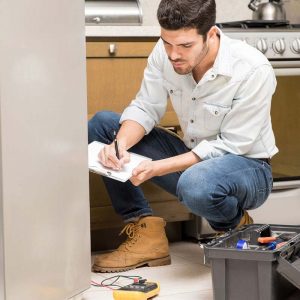Last Updated on July 5, 2025

Ever felt that sinking feeling when your dryer refuses to heat up or finishes a cycle with a loud, unsettling noise? It’s like your laundry decided to throw a tantrum—right when you have a mountain of clothes waiting. But fear not! This article is a laid-back, no-nonsense guide designed to walk you through the common dryer issues and give you practical fixes that will have your machine humming in no time.
Introduction: When Your Dryer Acts Up
Dryers are an essential part of home life, yet they can sometimes be as unpredictable as the weather. One minute everything’s smooth, and the next, you’re left wondering if your dryer’s trying to tell you something. The goal here is to break down these mysteries in a friendly, conversational tone—think of it as a chat with a knowledgeable neighbor who’s seen it all and isn’t afraid to share some quirky anecdotes along the way.
Dryer Woes: Recognizing the Red Flags
Before you grab your toolbox, it helps to understand the common problems that might be plaguing your dryer. Here’s a quick rundown:
- No Heat: The dryer runs but leaves your clothes as damp as a rainy day.
- Strange Noises: Banging, thumping, or a persistent grinding sound that makes you think a small engine is inside.
- Long Drying Times: What used to be a quick cycle now drags on for what feels like an eternity.
- Drum Not Turning: It’s as if the dryer’s decided to take a day off, leaving your clothes crumpled and wet.
- Error Codes: Modern dryers might flash a code on the display, giving you a cryptic message to decode.
These are the red flags that hint at potential underlying issues. Recognizing them early on can save you a lot of hassle—and maybe even a call to a repair service.
Step-by-Step Troubleshooting: Rolling Up Your Sleeves
Let’s break the process down into manageable steps. Think of it like following a recipe—you gather the ingredients, follow the instructions, and voilà, a successful repair.
- Unplug the Dryer: Safety first! Always disconnect power before you start tinkering.
- Inspect the Ventilation: Clogged vents are a common culprit. Check for lint build-up that might be choking the airflow.
- Examine the Heating Element: If there’s no heat, the heating element might be broken. A multimeter can help determine if it’s getting power.
- Check the Drum Belt: A worn or broken belt can prevent the drum from turning properly.
- Test the Thermostat: A faulty thermostat may lead to inconsistent heating.
This systematic approach helps pinpoint the issue without turning the repair into an overwhelming mystery. Remember, patience is key—much like waiting for your favorite band’s encore, the process might take a little time, but it’s worth it in the end.
DIY Solutions: Fixes You Can Try at Home
Now that you’ve narrowed down the potential issues, here are some practical, hands-on fixes that you can try. Let’s keep it simple and effective:
Vent Cleaning: The Unsung Hero
A common cause for extended drying times is a clogged vent. Lint doesn’t just pile up in the filter—it can accumulate in the vent hose as well.
- Detach the vent hose and check for blockages.
- Use a vacuum or a long brush to remove any buildup.
- Reattach securely to ensure proper airflow.
This fix is like giving your dryer a breath of fresh air, literally. And if you’re ever in doubt about other dryer repairs, don’t hesitate to See this page for more detailed guidance.
Replacing the Heating Element
If your dryer isn’t heating at all, the heating element might be on the fritz. Here’s a simplified approach:
- Remove the Back Panel: Locate the heating element housing and carefully remove the cover.
- Inspect the Element: Look for obvious signs of wear, such as breaks or burn marks.
- Disconnect and Replace: Take note of the wiring connections, remove the faulty element, and install the new one, ensuring all connections are secure.
- Test It Out: Once reassembled, run a short cycle to see if the dryer heats up properly.
It may sound a bit technical, but with a bit of determination and the right tools, you might find it’s not as daunting as it appears. Think of it as giving your dryer a new lease on life.
Fixing a Noisy Drum
Nothing ruins the vibe like an overly noisy dryer. If your machine is rattling or thumping, the problem could lie with the drum rollers or the belt.
- Examine the Rollers: Check for wear and tear. Replacing worn rollers can drastically reduce noise.
- Inspect the Belt: A frayed or loose belt might be causing the drum to wobble. If needed, replace it with a new one.
- Tighten Screws and Fasteners: Loose parts can amplify noise—ensure everything is snug and secure.
Addressing these issues can transform a noisy machine into a quiet workhorse, letting you enjoy the hum of a well-tuned appliance rather than a disruptive clatter.
Advanced Fixes: When DIY Takes a Leap
Sometimes, the problem goes beyond simple fixes. Advanced issues might require a deeper dive into the mechanics of your dryer. Here are a few advanced repair scenarios:
- Electrical Component Failures: Beyond the heating element, other electrical components (like thermal fuses or thermostats) might malfunction. Testing these with a multimeter and replacing them can resolve issues.
- Control Board Malfunctions: Modern dryers rely on electronic control boards. If error codes persist or settings reset unexpectedly, the control board may be at fault. Replacing it might be the only solution.
- Structural Issues: In rare cases, the drum assembly or support structures might have developed cracks or wear. This often calls for a professional touch, but armed with knowledge, you might be able to perform some repairs yourself.
These advanced repairs require a steady hand and a keen eye for detail. They might also benefit from the guidance of an online tutorial or a consultation with a seasoned DIY enthusiast.
Safety Guidelines: Keeping It All Under Control
While the prospect of fixing your dryer can be exciting, safety is paramount. Here are some golden rules to live by:
- Disconnect Power: Never work on an appliance that’s still plugged in. It’s a basic step that cannot be overlooked.
- Use Proper Tools: Invest in quality tools and make sure they are in good condition.
- Wear Protective Gear: Safety glasses and gloves are a must, especially when dealing with electrical components.
- Work in a Clean Environment: A cluttered workspace can lead to mistakes. Keep your area tidy and well-lit.
- Know Your Limits: If a repair seems too complex or dangerous, it might be time to consult a professional.
“An ounce of prevention is worth a pound of cure.” – Benjamin Franklin
Anecdotes and Real Talk: Lessons from the Trenches
Let’s be honest—no DIY journey is without its share of mishaps and humorous setbacks. I recall a friend who once tried to fix a dryer vent and ended up with more lint on his clothes than in the vent itself! Moments like these remind us that every mistake is just a stepping stone to mastery. Embrace the missteps as part of the learning curve and laugh at the absurdity of it all.
Another common story is of someone who spent hours diagnosing a “mysterious” noise, only to discover it was a loose screw rattling around. Sometimes, the simplest fixes are the ones we overlook. These anecdotes underscore the fact that DIY repairs are as much about building confidence as they are about saving money.
Wrapping It All Up: Your Dryer, Your Rules
At the end of the day, repairing your dryer is a journey that blends technical know-how with a dash of creativity and a healthy dose of humor. Whether it’s clearing out a clogged vent, replacing a worn-out belt, or tackling more complex electrical issues, every fix is a small victory that brings you closer to a more efficient and reliable home appliance.
Remember these key points as you embark on your repair adventures:
- Be methodical: A systematic approach saves time and frustration.
- Keep learning: Every repair is an opportunity to expand your skills and knowledge.
- Stay safe: Never compromise on safety—even if it means taking a break or calling in expert help.
- Enjoy the process: Celebrate each small success and learn from every challenge.
Final Thoughts
Dryer repair isn’t just about fixing a machine; it’s about taking control of your home’s well-being and proving to yourself that you can overcome everyday challenges. With persistence, the right tools, and a bit of humor, even the most stubborn dryer can be tamed. So, next time your dryer acts up, remember that you have the know-how to troubleshoot, repair, and ultimately triumph.






